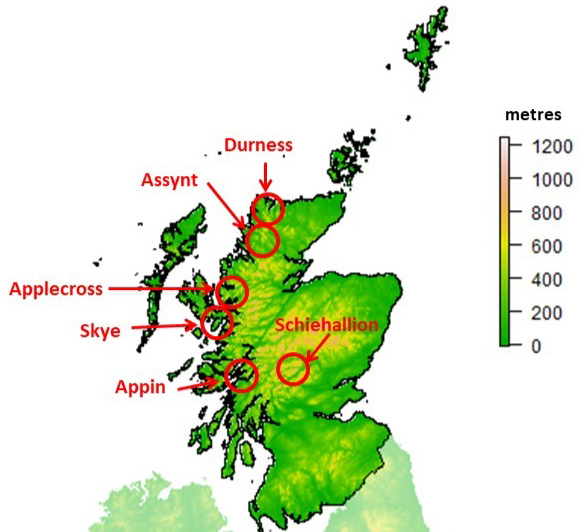Cave types
There are over 3000 known natural caves in Scotland. Usually, caves form in areas where soluble rock such as limestone is gradually dissolved by water over time. This is referred to as ‘karst’. Cave systems in limestone occur in widely scattered regions throughout the country (see map below) and these are our principal focus.
There are other types of caves and underground passages as well:
- ‘Slip-faults’ – where tectonic activity has allowed rock faces to ‘slip’ away from hillsides, creating deep fissures.
- Littoral or sea caves, carved out of a variety of types of shoreline by the activity of the ocean. These may present very difficult access, but frequently attain lengths of 100 metres or more. Tidal conditions can affect safety. Many others lie on ‘raised beaches’, the result of wave action when relative sea levels were much higher than today.
- Boulder caves: usually small voids in boulder heaps, historically used as shelters by celebrated Scottish characters such as Rob Roy McGregor, Robert the Bruce and Bonnie Prince Charlie.
- Artificial or extended voids in various rock types, commonly altered by human activity and generally classified as ‘archaeological’ caves.
- There are also many disused metal and stone mines, especially in Scotland’s Central Belt, some of which can be entered safely if you know what you are doing. Coal and shale mines should always be avoided due to instability and the threat of poisonous gas.
Caving regions in Scotland

There are six main regions in Scotland that have cave systems: Durness, Assynt, Applecross, Skye, Appin, and Schiehallion
Cave database
The GSG has set up and maintains a database of all known caves and mines in Scotland, giving details of locations, exploration, and finds within. This is continually being updated. It can be accessed for free by clicking here.